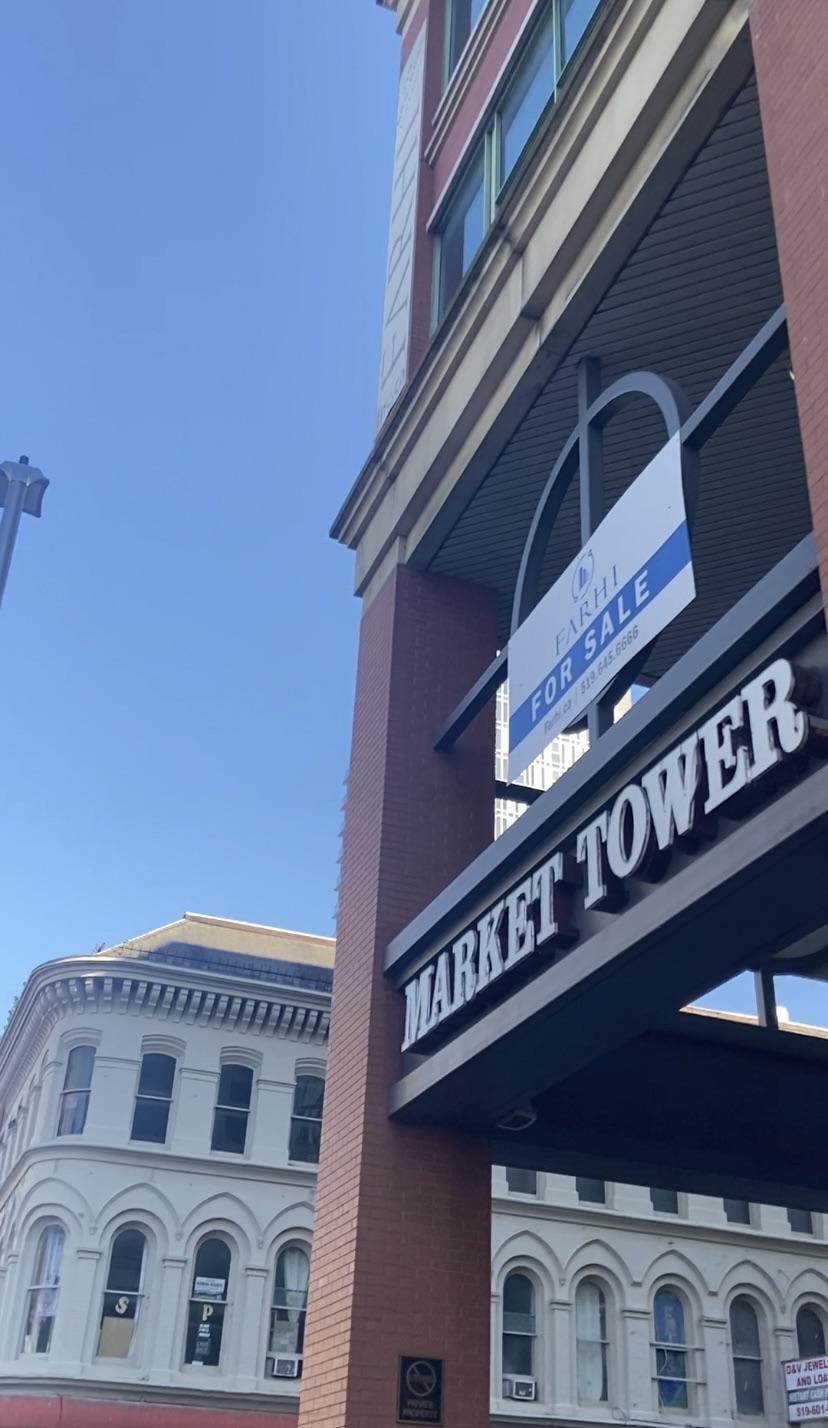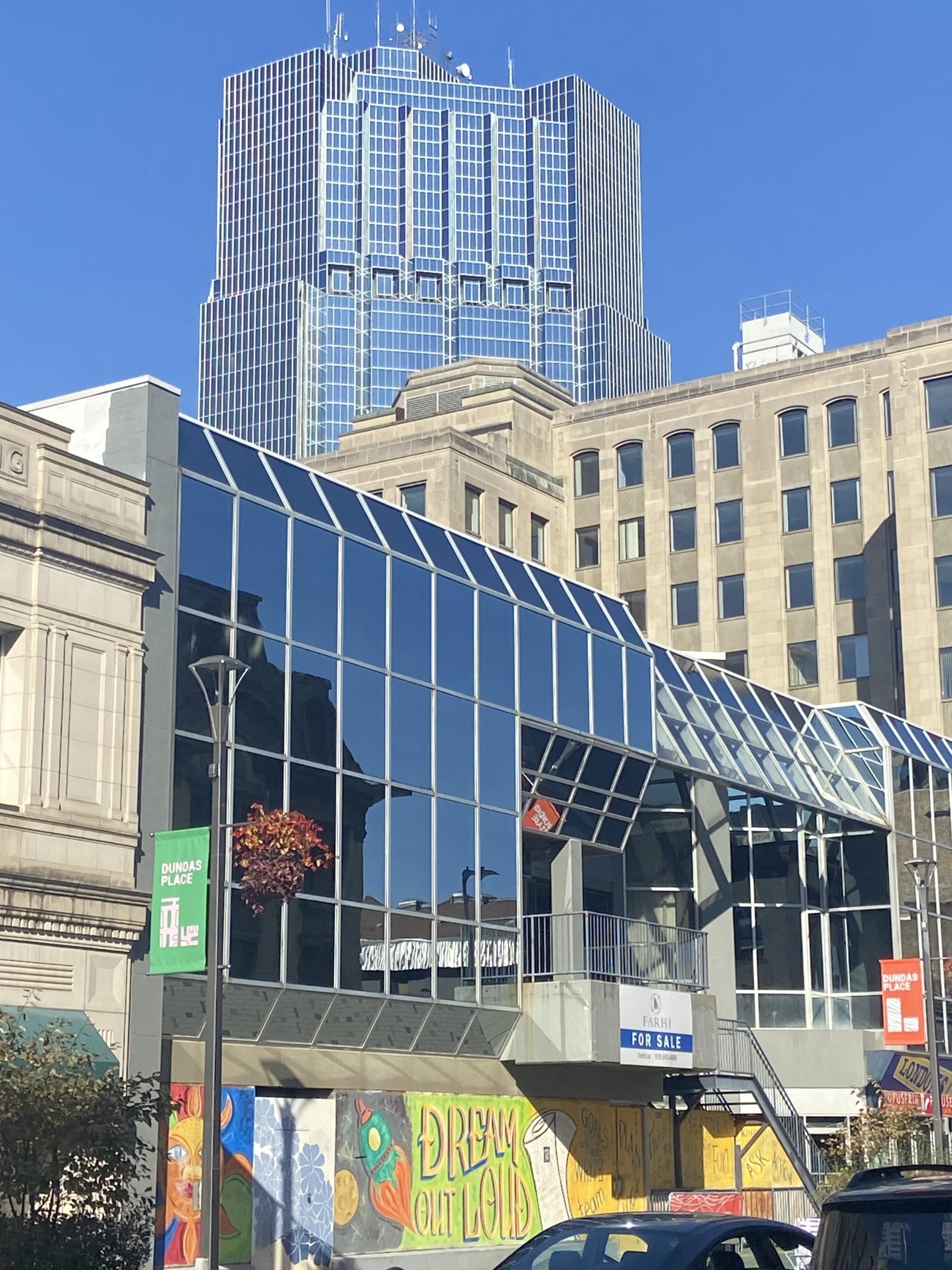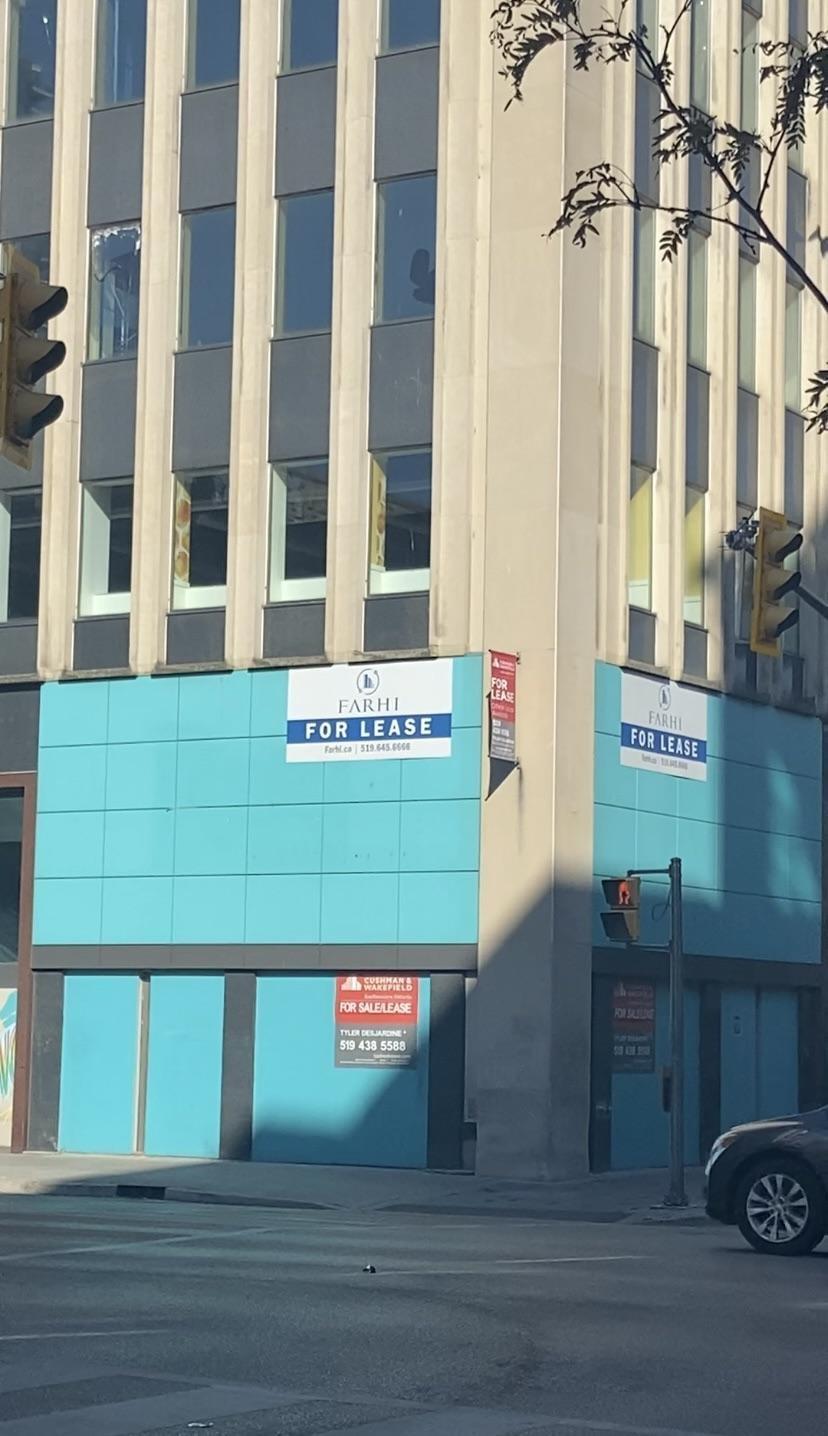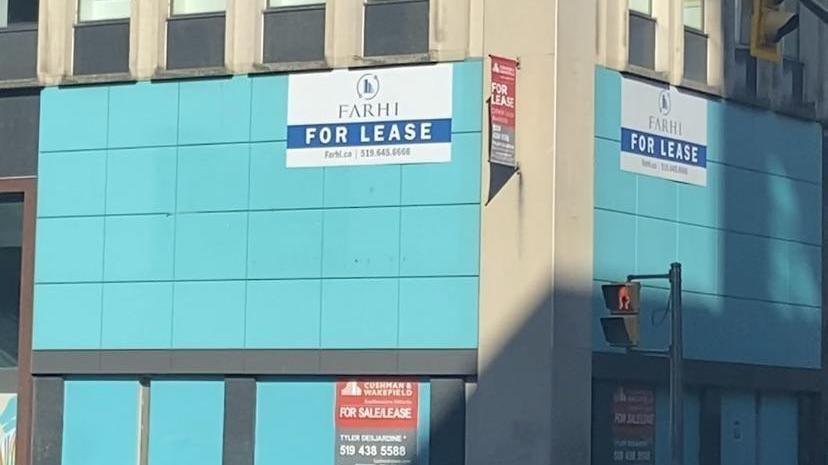
Something’s happening downtown that has locals doing double-takes on their morning commute. Those familiar “FARHI” signs that have become as much a part of London’s landscape as Tim Hortons locations are now joined by something much more interesting – “For Sale” notices plastered across several high-profile properties.
Market Tower, the former Rexall building, and a prime Dundas Street location are all sporting fresh real estate signage, sparking conversations across the city about whether Shmuel Farhi’s decades-long grip on downtown London might finally be loosening.

For anyone who’s lived here for more than a hot minute, the name Farhi is practically synonymous with empty buildings and missed opportunities. The developer has been accumulating properties throughout the core for years, often leaving them vacant while the rest of downtown struggled to find its footing.
Local discussions have been buzzing with speculation about what’s driving these sudden sales. Some residents are cautiously optimistic that new ownership might actually breathe life into these spaces, while others are wondering if this is just another strategic move in a much longer game.

The timing feels particularly significant given London’s ongoing battle with downtown revitalization. These aren’t just random properties we’re talking about – they’re some of the most visible real estate in the core, buildings that could genuinely transform entire blocks if they fell into the right hands.
What makes this whole situation even more intriguing is the backstory. Farhi Holdings has been at the centre of heated local debates for years, with many pointing to their vacant properties as a major factor in downtown’s struggles to attract businesses and residents.
The Market Tower alone represents massive potential. This isn’t some run-down strip mall we’re discussing – it’s a substantial piece of infrastructure that could house dozens of apartments or serve as a hub for local businesses if properly developed.
Then there’s the former Rexall building, which according to local reports was actually sold back in January for $5.1 million and is supposedly being converted into housing with city incentives. But those new “For Sale” signs have people scratching their heads about what’s really happening behind the scenes.
The building on Dundas that once housed Grace Restaurant is also part of this property shuffle, adding another piece to what feels like a significant shift in the downtown real estate landscape.
What’s particularly fascinating is how different people are interpreting these developments. Some see it as Farhi finally being forced to liquidate assets he can no longer afford to maintain. Others wonder if it’s just elaborate marketing to deflect criticism about keeping buildings empty.
The skeptics aren’t entirely wrong to be cautious. There’s been talk that some of these “For Sale” signs might be more about optics than actual intent to sell – a way to show the city that attempts are being made to move these properties while maintaining the status quo.
But even the cynics have to admit something feels different this time. The sheer number of properties hitting the market simultaneously suggests this isn’t just business as usual.
Local business owners and residents who’ve watched downtown struggle for years are keeping a close eye on who might step up as buyers. The hope is that new ownership would mean new vision – maybe actually filling these spaces with the shops, restaurants, and housing the core desperately needs.
The broader context makes these sales even more significant. London’s downtown has been grappling with vacancy rates, safety concerns, and a general lack of vibrancy that many residents blame, at least partially, on properties sitting empty for years on end.
Whether this represents a genuine turning point or just another chapter in an ongoing saga remains to be seen. But for a city that’s been waiting for downtown revitalization for what feels like forever, any shake-up in the property landscape is worth paying attention to.
The conversation started gaining traction in local online communities, with residents sharing photos of the new signage and debating what it might mean for the future of these spaces.
Some pointed out that Farhi has properties scattered throughout southwestern Ontario, including developments in Windsor, which adds another layer to questions about his London strategy.
What everyone seems to agree on is that downtown London has incredible potential that’s been largely untapped. These building sales could represent the first real opportunity in years to unlock some of that potential – assuming the right buyers emerge with the right vision.
The properties in question aren’t just real estate transactions; they’re symbols of what downtown could become with proper investment and development. Whether that happens depends entirely on who steps forward and what they plan to do with these prime locations
The discussions emerged on Reddit before spreading to broader community conversations about the future of London’s core

